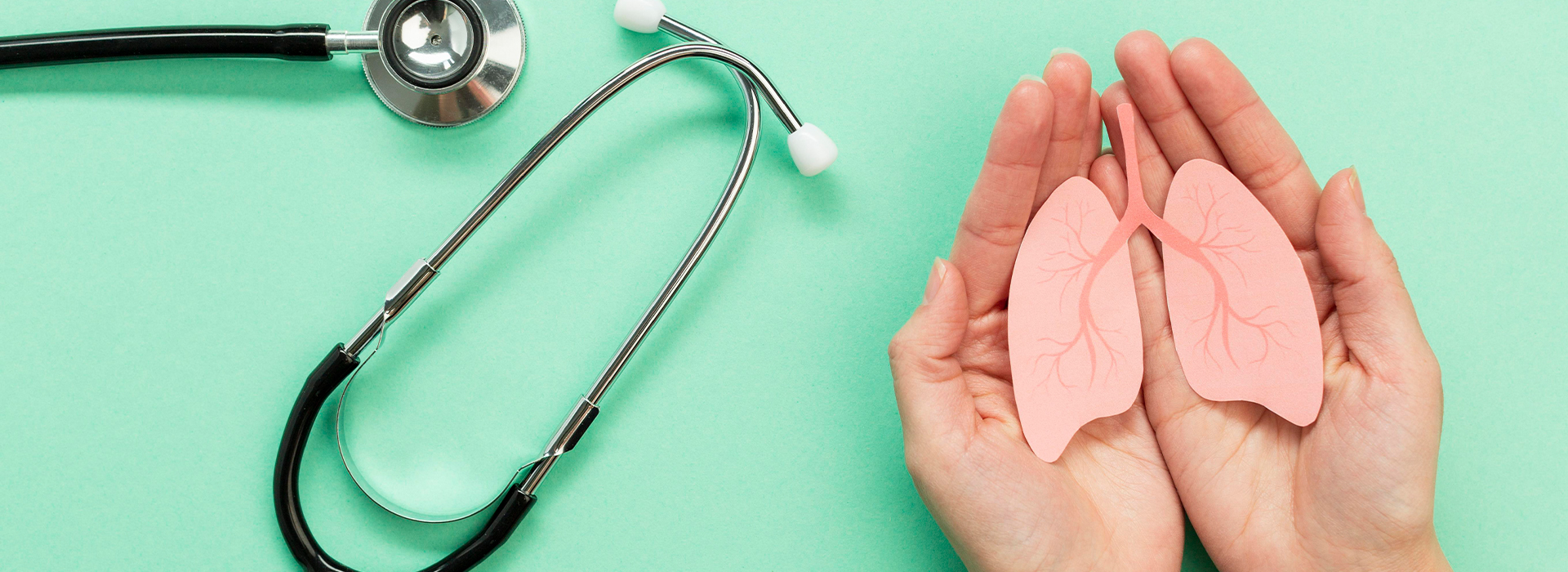Working Time
- 24/7 (General inquiry)
Contact Info
-
Phone: 037638001
Ask the Experts

A Pulmonology Clinic specializes in the diagnosis, treatment, and management of diseases related to the lungs and respiratory system. Pulmonologists (lung specialists) are trained to treat a wide range of conditions affecting the respiratory system, including chronic diseases such as asthma, chronic obstructive pulmonary disease (COPD), and acute conditions like pneumonia. These clinics are also critical for managing conditions like sleep apnea, lung cancer, and pulmonary hypertension.
Services Provided in a Pulmonology Clinic:
- Asthma Diagnosis and Treatment:
Asthma Diagnosis: Includes clinical exams and lung function tests such as spirometry to assess the severity of asthma.
Medication Management: Prescribing medications like inhaled corticosteroids, bronchodilators, and biologics to help control asthma symptoms.
Asthma Control Education: Educating patients on how to avoid triggers, use inhalers correctly, and manage flare-ups. - Chronic Obstructive Pulmonary Disease (COPD):
COPD Diagnosis: Diagnosing COPD using pulmonary function tests such as spirometry, along with a review of medical history and symptoms.
Symptom Management: Providing medications, such as inhalers, steroids, and oxygen therapy, to relieve symptoms like chronic cough, shortness of breath, and mucus production.
Pulmonary Rehabilitation: Offering rehab programs to help patients improve breathing and quality of life through exercise and lifestyle changes.. - Respiratory Infections and Pneumonia:
Pneumonia Diagnosis and Treatment: Diagnosing and treating pneumonia caused by bacterial, viral, or fungal infections.
Chronic Cough and Bronchitis: Diagnosing and managing chronic bronchitis, including both acute and chronic cases.
Viral Respiratory Infections: Including influenza, COVID-19, and respiratory syncytial virus (RSV). - Bronchitis and Chronic Cough:
Chronic Bronchitis: Diagnosing and managing chronic bronchitis, including both acute flare-ups and long-term treatment options.
Chronic Cough Diagnosis: Identifying underlying causes for persistent coughing, such as postnasal drip, gastroesophageal reflux disease (GERD), or infection.
Treatment Options: Bronchodilators, steroids, or antibiotics (when appropriate) to control symptoms and reduce inflammation. - Breathing Difficulties and Shortness of Breath:
Dyspnea (Shortness of Breath) Diagnosis: Identifying the root causes of shortness of breath, which may include lung diseases, heart conditions, or anemia.
Diagnostic Tests: Pulmonary function tests, chest X-rays, and CT scans to evaluate lung function and identify potential causes of breathing difficulties. - Smoking-Related Lung Diseases:
Smoking-Related Lung Diseases: Managing conditions like COPD, emphysema, and lung cancer caused by long-term smoking.
Smoking Cessation Programs: Providing counseling and support to help patients quit smoking and reduce the long-term damage to their lungs. - Sleep-Related Breathing Disorders:
Sleep Apnea Diagnosis: Diagnosing obstructive sleep apnea (OSA) through clinical evaluation and sleep studies (Polysomnography).
Treatment Options: CPAP (Continuous Positive Airway Pressure) therapy or other interventions to manage sleep apnea and improve sleep quality. - Lung Cancer Diagnosis and Treatment:
Lung Cancer Screening: Performing imaging tests, such as CT scans or X-rays, to detect early signs of lung cancer in high-risk patients.
Cancer Treatment: Collaborating with oncologists to provide treatment plans for lung cancer, which may include surgery, chemotherapy, radiation, or targeted therapy.
Symptom Management: Providing palliative care to manage symptoms like cough, chest pain, and shortness of breath in advanced cancer stages. - Oxygen Therapy:
Oxygen Therapy: Providing oxygen for patients with chronic lung diseases, such as COPD or pulmonary fibrosis, who suffer from low oxygen levels in the blood.
Patient Education: Educating patients on how to use oxygen devices effectively to improve breathing and overall quality of life. - Interstitial Lung Diseases (ILD):
Diagnosis and Management: Diagnosing conditions like pulmonary fibrosis, sarcoidosis, and other interstitial lung diseases that cause scarring in the lungs.
Treatment: Offering treatments to slow disease progression, such as antifibrotic drugs and anti-inflammatory therapies. - Pulmonary Hypertension:
Diagnosis: Identifying pulmonary hypertension (high blood pressure in the arteries of the lungs) using tests like echocardiograms and right heart catheterization.
Treatment: Managing the condition through medications, oxygen therapy, and lifestyle changes. - Respiratory Allergy Testing and Treatment:
Allergy Testing: Identifying allergens that trigger respiratory symptoms, such as pollen, dust, or pet dander.
Immunotherapy: Offering allergy shots or other treatments to reduce sensitivity to allergens and control asthma-like symptoms. - Pulmonary Function Testing:
Spirometry: A common test used to measure lung function and diagnose conditions like asthma, COPD, and other restrictive or obstructive lung diseases.
Lung Volume Tests and Diffusion Capacity Tests: Additional tests to assess lung capacity and the ability of oxygen to diffuse into the blood from the lungs.. - Pulmonary Rehabilitation:
Rehabilitation Programs: Specialized programs to help patients with chronic lung diseases improve their physical function, endurance, and quality of life through exercise, education, and therapy.
Lifestyle Guidance: Offering support and strategies for managing chronic lung diseases, including advice on nutrition, exercise, and coping mechanisms. - Advanced Diagnostic Procedures:
Chest X-rays and CT Scans: For detailed imaging of the lungs to detect structural abnormalities, infections, tumors, or signs of chronic lung diseases.
Bronchoscopy: A procedure used to view the airways and collect samples for diagnostic testing, often used to diagnose infections, lung cancer, or unexplained lung diseases.
Pleural Biopsy: In cases of suspected lung disease involving the pleura (lining around the lungs), a biopsy may be conducted. - Consultations for Severe Respiratory Conditions:
Referral for Specialist Care: If necessary, pulmonologists will refer patients to other specialists (e.g., cardiologists, oncologists, sleep specialists) for additional treatment options or to manage complex health issues.
A Pulmonology Clinic plays a vital role in diagnosing and managing a wide range of respiratory conditions. The clinic provides comprehensive care for patients with chronic diseases like asthma, COPD, and interstitial lung disease, as well as acute issues like pneumonia and sleep apnea. Pulmonologists use advanced diagnostic tools and treatments to improve lung health, manage symptoms, and enhance patients’ quality of life. Whether it’s routine asthma management, lung cancer treatment, or helping patients quit smoking, pulmonology clinics are essential for ensuring optimal respiratory health.
